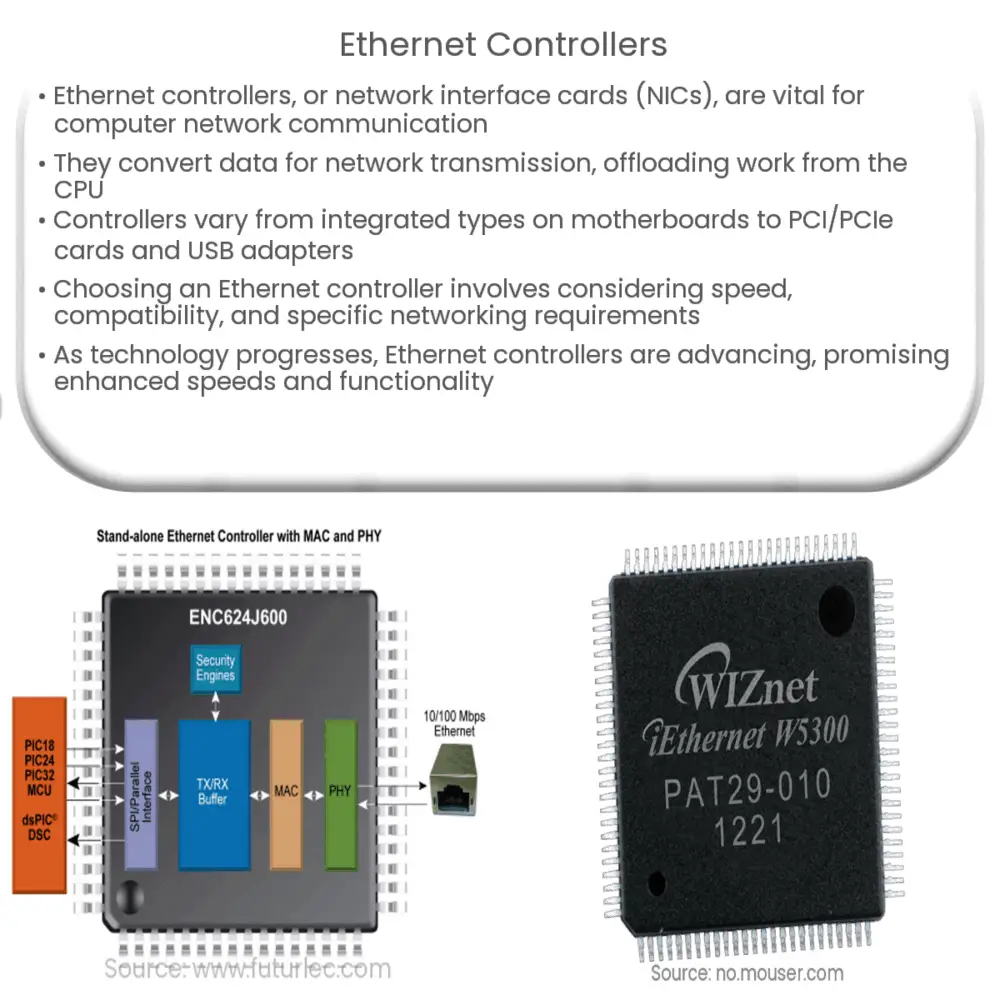Explore the fundamentals of Ethernet controllers, their types, selection criteria, networking standards, and their role in network troubleshooting.

Ethernet Controllers: An Introduction
Ethernet controllers, also known as network interface cards (NICs), are an integral part of any computer system connected to a network. They facilitate the essential task of communication between your computer and the network, whether it’s a local area network (LAN) or the vast expanse of the internet.
Functionality
Ethernet controllers are responsible for converting the data from your computer into a format that can be transmitted over the network, and vice versa. They handle the protocol management tasks, reducing the load on your computer’s CPU and allowing it to focus on other tasks. This essential function makes Ethernet controllers an indispensable part of your system’s hardware.
Types of Ethernet Controllers
- Integrated: Many modern motherboards come with an integrated Ethernet controller. This design simplifies the setup process and ensures compatibility.
- PCI/PCIe Cards: These are separate cards that you install into a PCI or PCIe slot on your motherboard. They come in different speed variations, from 10 Mbps to 10 Gbps and beyond.
- USB Ethernet Adapters: These are small, portable devices that connect to your computer via a USB port. They’re handy for situations where an integrated or PCIe controller isn’t an option, such as with many laptops or ultra-compact desktops.
Choosing an Ethernet Controller
When selecting an Ethernet controller, it’s important to consider factors such as speed, compatibility, and your specific networking needs. For high-performance tasks such as gaming or large file transfers, a gigabit Ethernet controller is often recommended. However, for basic internet browsing, a lower speed controller may be sufficient.
Ethernet Controllers and Networking Standards
Ethernet controllers follow a set of networking standards defined by the IEEE 802.3 committee. These standards outline the technical details of Ethernet communication, including data rates, transmission methods, and physical layer specifications. Understanding these standards can help you choose the right Ethernet controller and ensure optimal performance of your network.
The Role of Drivers
To function properly, an Ethernet controller requires a driver, which is a piece of software that allows your operating system to interact with the hardware. It’s crucial to ensure that you have the correct and updated drivers installed to avoid potential issues such as slow internet speeds or connection instability.
Ethernet Controllers and Network Troubleshooting
When experiencing network connectivity issues, the Ethernet controller is often a key area to investigate. A faulty controller, outdated drivers, or incorrect network settings can all lead to network problems. Therefore, knowing how to diagnose and troubleshoot these issues is crucial for maintaining a stable and efficient network connection.
Future of Ethernet Controllers
As technology advances, the demand for faster and more reliable network connections continues to grow. Ethernet controllers are evolving to meet this demand, with newer models supporting speeds up to 100 gigabits per second. The future will likely bring further improvements, including even faster speeds, more advanced features, and increased energy efficiency.
Impact of Ethernet Controllers
The role Ethernet controllers play in our daily lives may often be overlooked, but their impact is undeniable. They underpin the smooth operation of local networks and the internet, enabling everything from video conferencing and online gaming to cloud storage and e-commerce. Without Ethernet controllers, our digital world would look very different indeed.
Conclusion
In conclusion, Ethernet controllers play a pivotal role in enabling network communication. From handling data conversion to managing network protocols, they work behind the scenes to keep our network connections running smoothly. Choosing the right Ethernet controller requires a consideration of factors like speed, compatibility, and individual network needs. With technology’s rapid advancement, Ethernet controllers continue to evolve, promising faster and more reliable connections in the future. Understanding Ethernet controllers is crucial not only for IT professionals but also for anyone who relies on a stable and efficient network connection in their daily life.

